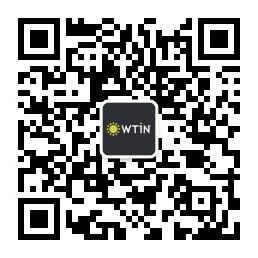
Sample: Innovation Outlook: Recycling
By Otis Robinson, Jessica Robe, Joseph Link, Victoria Nickerson, Ruby Penson, Madelaine Thomas, Elisha Jones
Annually, the global textile & apparel (T&A) industry produces a gigantic amount of waste – an amount that has become suffocating and detrimental to the environment. Over 100 billion garments are produced each year, says the Ellen MacArthur Foundation, and although the vast scale of textile waste generation and disposal poses challenges to calculations, it is assumed that around 85% of total textile waste comes from clothes and home textiles. In 2018 alone, over 17 million tons of textile waste was generated in the US.
The impact of this perpetual stream of production and waste is felt within the environment. The consistent mass production of textiles requires a significant depletion of natural resources (water, energy and raw materials) and emits masses of greenhouse gases into the atmosphere. Meanwhile, textile processing requires the use of various chemicals (pretreatments, finishes and dyes) which, when disposed of, can leach into soil and waterways, polluting ecosystems and potentially causing harm to wildlife and human health. Meanwhile, when products meet their end at landfills, non-biodegradable materials persist for hundreds of years.
But there exist multiple alternatives to this gargantuan waste problem, such as the reduction of overproduction and overconsumption, the elongation of product lifetime and innovative biodegradable or circular product design. And “one of the most sustainable and scalable levers available is fibre-to-fibre recycling”, says a report by McKinsey & Company.
Fibre-to-fibre recycling refers to the closed-loop recycling of textiles and there are multiple technologies capable of enabling it, yet the numbers remain low. The United Nations Conference on Trade and Development (UNCTAD) estimated that only around 13% of textiles were collected for recycling globally in 2019, leaving a substantial majority of textile waste unrecycled. But there is value in waste, including opportunities to create circular economy and meet consumer and stakeholder demand for sustainable processes. In fact, the aforementioned McKinsey & Company report predicts that fibre-to-fibre recycling could reach 18 to 26 percent of gross textile waste in 2030.
As such, in this edition of the Innovation Outlook – subtitled Recycling – our WTiN analysts examine the numerous textile recycling technologies and assess their status against our Commercial Readiness Scale. By drawing attention to the various recycling technologies, we hope to help push positive change within the industry – things should and can change, but industry players must take the plunge.
acrylic, Ambercycle, anti-bacterial, antiflammable, antisoil, anti-static spray, antiwrinkle, apparel, blends, C&A, cacti, Caribios, cellulosic, chemical free, chemical recycling, chemical, chemicals, Circ, Circular Ecosystem, circular, circularity, closing the loop, coating, colour, commercially ready, compound, compounds, cotton, cutting, depolymerisation, depolymerization, dimethyl terephthalate, DL1961, DMT, elastane, elastomers, ELeather, environmental product declaration, Enzymatic recycling, enzymatic, enzymes, EPD, EU LIFE, excess inventory, extraction, fashion recycling, fashion waste, fashion, FastFeetGrinded, fibre, fibres, finishes, finishing, fire resistant, fluff, foam, footwear, functional coatings, funding, Gen Phoenix, hydro-entanglement, Hydrothermal processing, hydrothermal, Inditex, investment, Italy, Korea Research Institute of Chemical Technology KRICT, leather, Lenzing, Life Cycle Assessment (LCA), Loop Industries, Loop, Lululemon, lyocell, manmade cellulosic fibre, Manteco, materials, mechanical recycling, MEG, metal compounds, MMC, MMCF, monoethylene glycol, monomer, monomers, mushrooms, next-gen materials, North Carolina, nylon, offcuts, On, OnceMore, Patagonia, PET bottles, PET, pineapple, polyamides, polycotton, polyester recycling, polyester waste, polyester, polyethylene terephthalate, polymers, pulverisation, raw material, Recover, recycled fibres, recycled materials, recycler, recycling, regenerating, research, rPE, rubber, secondary wool, series A, shoe recycling installation, SK Geo Centric Co., SKGC, Södra, solvents, sorting, sports, Suez, sustainable leather, technical textiles, textile waste, textile, T-shirt, TWOTHIRDS, unused raw materials, vegan, water consumption, wool, Zara


